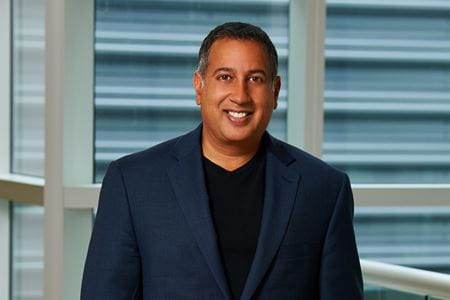The Indiana Center for Regenerative Medicine and Engineering at Indiana University School of Medicine is always looking for the next big breakthrough in the field of technology and medicine.
Recently, the ICRME hosted Ajay K. Seth, MD, a board-certified orthopedic hand and upper extremity surgeon practicing in North Canton, Ohio. Seth earned his undergraduate medical degree from a combined program at the Medical College of Wisconsin. He completed his orthopedic residency program at the Ohio State University and went on to do a fellowship in hand and upper extremity surgery from Allegany General Hospital.
Seth is the first surgeon in the United States to provide, through surgery, an amputee with the ability to move and feel her prosthetic hand with her brain. During the 16-hour procedure, the surgeon was able to re-route nerves in the upper arm to give the patient the ability to feel as though the prosthetic hand is her own. Six weeks after surgery, the patient demonstrated that she could feel and move a prosthetic arm and hand.
“Dr. Seth’s presentation broadly falls in the category of a new field called regenerative rehabilitation,” said Chandan Sen, PhD and Director of the ICRME. “This is when you not only have a prosthesis that’s fit to the amputee but a prosthesis that can talk to the amputee’s body and the body talks to the prosthetic.”
The ICRME is interested in the work that Seth does because it may complement their current rehabilitation efforts.
Sen said that the ICRME’s work with prosthetics is focused on maintaining the current health of a residual limb. When a prosthetic is fit to a residual limb, the weight and tightness can cause residual limb damage. If a prosthetic causes enough limb damage, an individual will not be able to use a prosthesis. By reducing or eliminating this type of damage, ICRME researchers are solving a problem in non-invasive ways that they hope will work in a broader population.
Sen has invited Seth to partner with the ICRME to see if they can recreate what Seth did on a larger scale using an animal model—allowing the center to understand better the risk involved in these complex surgeries.
